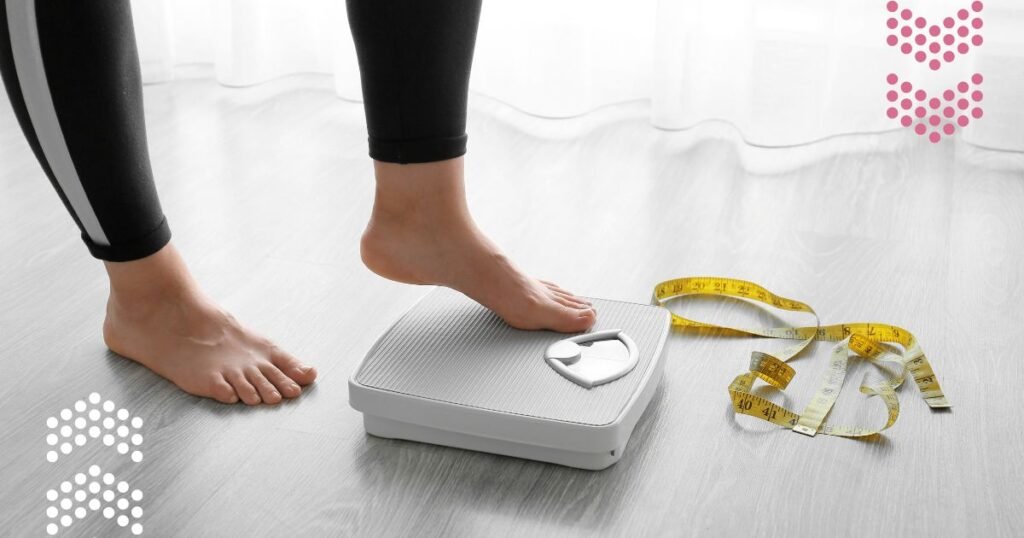How Estrogen Encourages Fat Storage in the Hips, Thighs, and Buttocks for Women
Estrogen is a key hormone that plays several roles in a woman’s body, including fat storage. Many women notice that they tend to store fat in specific areas like the hips, thighs, and buttocks. This is no coincidence; it’s due to the impact of estrogen. By understanding how this hormone influences fat distribution, women can better manage their weight and overall body composition.
Understanding the relationship between estrogen and fat storage is essential, especially for women who are trying to achieve specific fitness or weight loss goals. Targeting fat in the lower body requires a combination of hormone regulation, exercise, and nutrition.
What is Estrogen?
Estrogen is a hormone that plays a critical role in the female reproductive system. It is responsible for regulating the menstrual cycle, preparing the body for pregnancy, and even affecting mood and skin health. However, beyond these well-known functions, estrogen also plays a significant role in how fat is distributed in a woman’s body.
Estrogen primarily affects women, but it is also present in men at lower levels. In women, it is produced mainly by the ovaries, but small amounts are also produced by the adrenal glands and fat tissues. Its influence on fat storage begins at puberty and continues through menopause, affecting how and where fat accumulates on the body.
While estrogen is important for overall health, high levels of this hormone can make it easier for women to store fat, especially in the hips, thighs, and buttocks. This is part of the body’s natural reproductive preparation, ensuring enough fat reserves to support pregnancy and breastfeeding.
Understanding Fat Distribution in Women
Women’s fat distribution patterns are different from men’s due to the presence of estrogen. Whereas men tend to store fat in the abdomen, women typically store it in the lower body. This leads to the common “pear-shaped” figure, characterized by wider hips and thighs.
The reason for this difference is tied to reproduction. Evolutionarily, women have developed a pattern of fat storage that supports childbearing. Fat stored in the hips, thighs, and buttocks is considered “safe” fat, as it provides energy during pregnancy and breastfeeding. This fat is less harmful than visceral fat stored around the organs in the abdominal area, but it is also more resistant to being burned off.
Women tend to accumulate subcutaneous fat, which lies just under the skin, particularly in the lower body. This type of fat is not as dangerous as the visceral fat often found in men’s abdominal areas, but it can still contribute to health issues if excessive.
The Role of Estrogen in Fat Storage
Estrogen directly affects how and where fat is stored in the body. It does this by stimulating the production of enzymes like lipoprotein lipase (LPL), which plays a significant role in fat storage. LPL helps break down fats and store them in fat cells, and estrogen tells this enzyme to direct fat storage specifically to the hips, thighs, and buttocks.
Women have more fat cells in these lower body areas than men, making them more prone to storing fat there. This is one of the reasons why women often find it more challenging to lose weight in these areas, as the fat is stored with the help of estrogen’s signaling to LPL.
The fat stored in the hips, thighs, and buttocks is referred to as “safe” fat because it is not metabolically dangerous like the fat stored around the organs. However, it’s important to note that this fat can be difficult to shed, especially when hormonal imbalances occur.
Fluctuations in Estrogen Levels
Estrogen levels fluctuate throughout a woman’s life, affecting fat storage at different stages. For instance, during puberty, estrogen levels increase significantly, which is why young girls experience a shift in fat distribution to their hips, thighs, and buttocks as they mature.
Pregnancy is another time when estrogen levels are elevated, leading to additional fat storage in these lower body areas. This is the body’s way of preparing for the energy demands of carrying and feeding a baby.
On the other hand, during menopause, estrogen levels drop, and many women notice a shift in fat storage from the hips and thighs to the abdomen. This change in fat distribution is often associated with higher risks of cardiovascular diseases, as abdominal fat is more harmful than lower body fat. Women who are approaching menopause can work with their doctors to manage these changes in fat distribution and overall health.
The Impact of Hormonal Imbalances on Fat Distribution
Hormonal imbalances, particularly those involving estrogen, can have a significant impact on fat distribution. Estrogen dominance, a condition where estrogen levels are higher than normal relative to progesterone, is one such imbalance that can lead to excessive fat storage in the lower body.
Women who experience estrogen dominance often struggle with weight gain in the hips, thighs, and buttocks. This condition can be caused by various factors, including poor diet, lack of exercise, or exposure to estrogen-mimicking chemicals found in the environment.
Polycystic Ovary Syndrome (PCOS) is another hormonal disorder that can affect fat storage. PCOS often leads to weight gain, and because of estrogen imbalances, this weight is frequently stored in the lower body. Women with PCOS may also experience difficulty losing weight due to the body’s resistance to insulin, which further complicates fat storage and metabolism.
Balancing Estrogen and Progesterone
For women dealing with fat storage issues related to estrogen, balancing estrogen and progesterone levels is crucial. Balancing these two hormones can help regulate fat storage and improve overall health. Diet, exercise, and stress management are essential for keeping hormones balanced.
In some cases, healthcare providers may recommend hormone therapy or supplements to help manage hormonal imbalances and fat storage. Maintaining a healthy balance between estrogen and progesterone helps prevent excess fat accumulation in the lower body and supports weight loss efforts.
How to Manage Estrogen-Related Fat Storage
Fortunately, women can take steps to manage fat storage related to estrogen. By focusing on diet, exercise, and hormone regulation, it is possible to control where fat is stored and reduce unwanted fat in the hips, thighs, and buttocks.
Diet plays a significant role in managing fat storage. Consuming a balanced diet rich in whole foods, vegetables, lean proteins, and healthy fats can help regulate estrogen levels. Avoiding processed foods and refined sugars, which can cause spikes in insulin and contribute to estrogen dominance, is also critical.
Incorporating phytoestrogens, plant-based compounds that mimic the effects of estrogen, into the diet may help balance hormone levels. Foods like flaxseeds, soy products, and legumes are rich in phytoestrogens and can be beneficial for regulating fat storage. However, it’s important to consult a healthcare provider before making any significant dietary changes.
Exercises Targeting Lower Body Fat
Exercise is one of the most effective ways to manage estrogen-related fat storage. Strength training, in particular, is crucial for targeting the hips, thighs, and buttocks. Exercises like squats, lunges, and deadlifts are highly effective at building muscle and burning fat in these areas.
Cardiovascular exercise is also important for overall fat loss. However, building muscle through strength training has a more significant impact on lower body fat, as it increases the body’s metabolic rate and helps burn fat even when at rest. A combination of cardio and strength training yields the best results.
Women can also benefit from incorporating high-intensity interval training (HIIT) into their workout routine. HIIT involves alternating between short bursts of intense exercise and periods of rest, which has been shown to be effective in reducing fat in stubborn areas. Learn more about exercise strategies at Harvard’s weight loss resources.
The Influence of Menopause on Fat Storage
Menopause brings a significant change in how the body stores fat. As estrogen levels decline, fat begins to accumulate more in the abdominal area rather than the hips, thighs, and buttocks. This shift is associated with an increased risk of metabolic diseases, such as diabetes and heart disease.
Hormone replacement therapy (HRT) can help manage some of these changes by supplementing the body’s natural estrogen levels. This therapy can assist in maintaining the fat distribution patterns seen in younger women. However, it’s essential to weigh the risks and benefits of HRT before starting it. Consulting a healthcare provider about this option is critical for women entering menopause.
In addition to considering HRT, adopting a healthy diet and exercise routine becomes even more important during menopause. By incorporating strength training and cardiovascular exercise, women can combat the natural shift in fat storage and maintain a healthier body composition post-menopause.
FAQs
Why do women store fat in their hips, thighs, and buttocks?
Women store fat in their hips, thighs, and buttocks due to estrogen. This hormone signals the body to accumulate fat in these areas, which is essential for reproductive health and energy reserves during pregnancy.
How can I reduce fat in the lower body regions?
To reduce fat in the hips, thighs, and buttocks, focus on a combination of strength training, cardiovascular exercise, and a balanced diet. Hormone balance is also crucial for managing fat storage effectively.
Does estrogen replacement therapy help with fat loss?
Estrogen replacement therapy (HRT) can help manage fat distribution during menopause, but it may not necessarily promote fat loss. Always consult with a healthcare provider to determine whether HRT is right for you.
What role does exercise play in managing estrogen-related fat storage?
Exercise is vital for managing estrogen-related fat storage. Strength training helps build muscle in the lower body and increase metabolic rate, while cardio burns overall body fat. A combination of both is the best approach.
Are there specific foods that help regulate estrogen levels?
Yes, consuming foods rich in phytoestrogens, like flaxseeds and soy, can help balance estrogen levels. These plant-based compounds mimic estrogen in the body and may contribute to better fat regulation.
Conclusion
Estrogen plays a crucial role in determining fat storage in women, particularly in the hips, thighs, and buttocks. Understanding how this hormone works can help women manage their body composition and make informed choices about diet, exercise, and lifestyle changes.
For more insights on managing fat storage and hormone balance, feel free to explore our comprehensive guide on estrogen and progesterone.
Browse our website for additional resources, including our women-only weight loss program, recipes, fitness shop, and tools to help you on your health journey.


